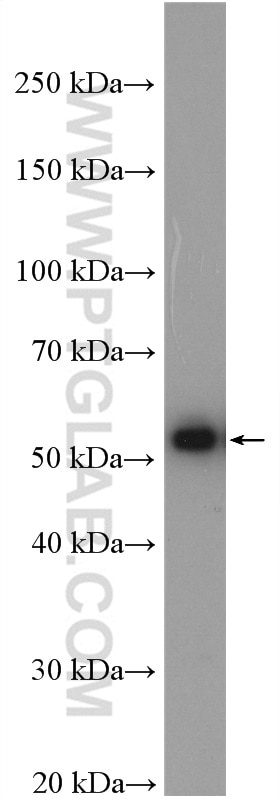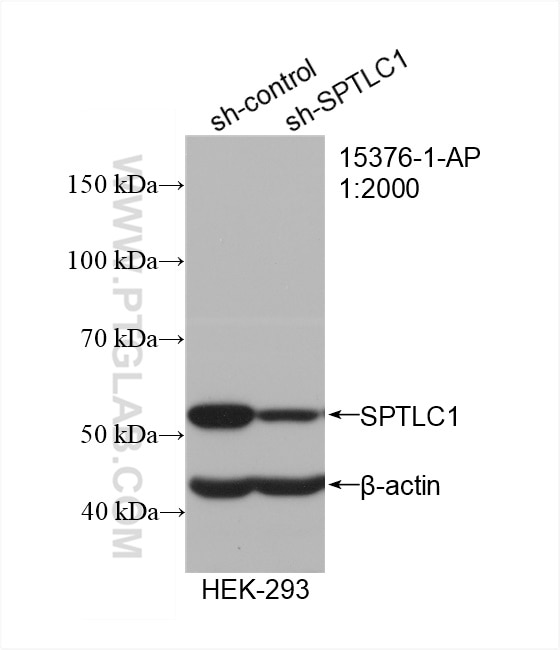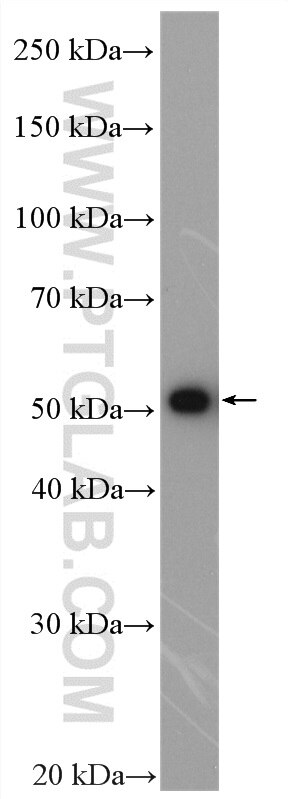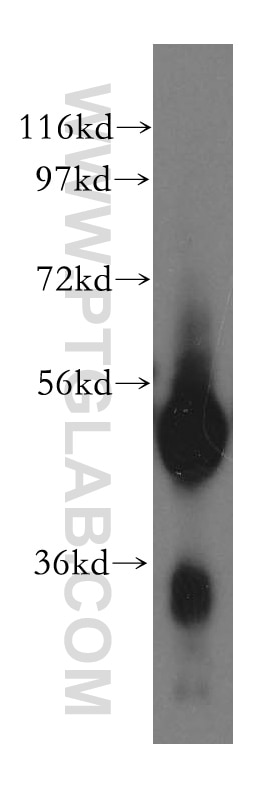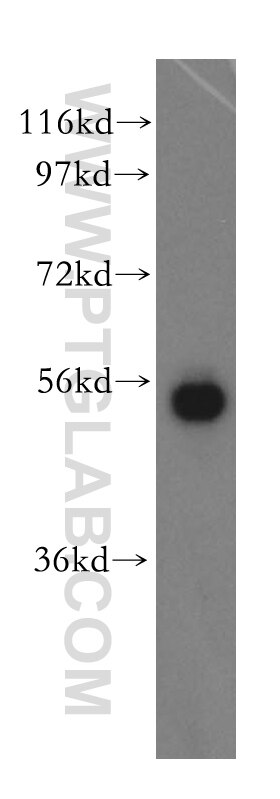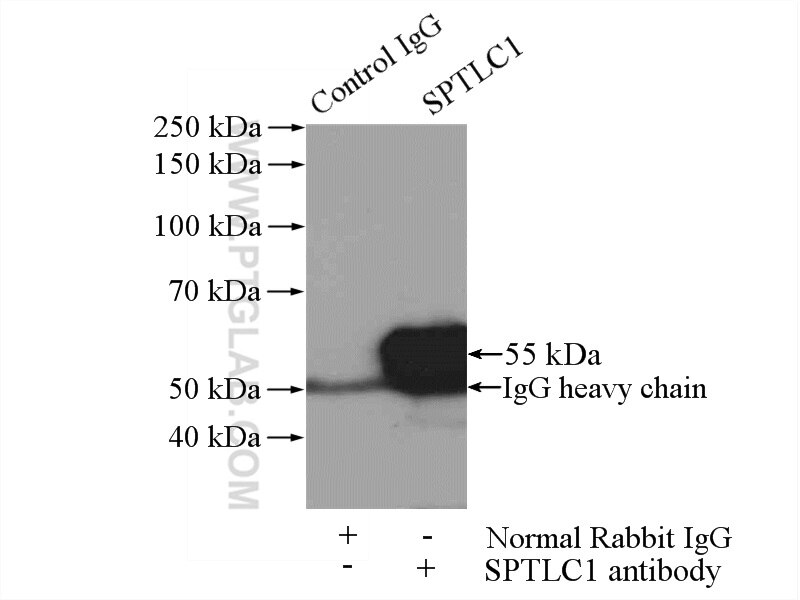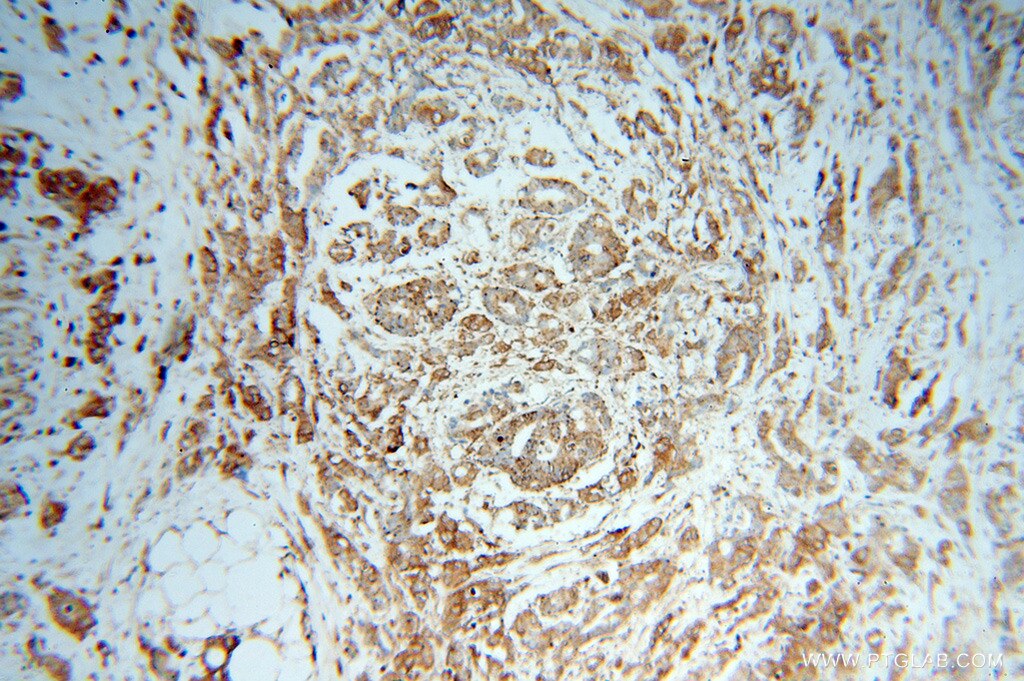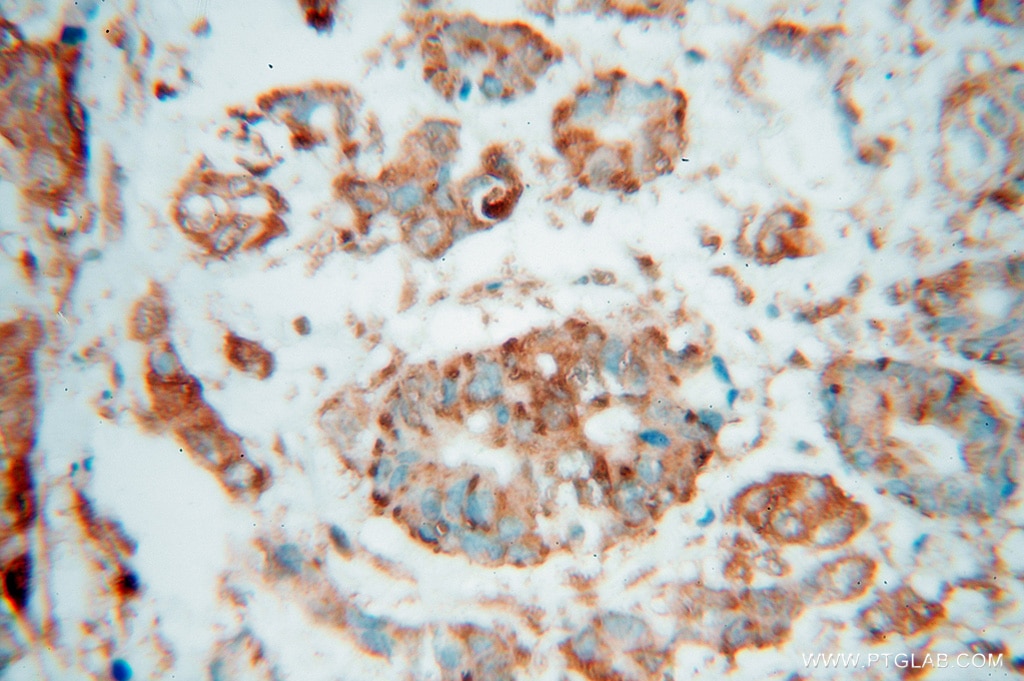Tested Applications
| Positive WB detected in | Jurkat cells, HEK-293 cells, human liver tissue, HepG2 cells |
| Positive IP detected in | HEK-293 cells |
| Positive IHC detected in | human colon cancer tissue Note: suggested antigen retrieval with TE buffer pH 9.0; (*) Alternatively, antigen retrieval may be performed with citrate buffer pH 6.0 |
Recommended dilution
| Application | Dilution |
|---|---|
| Western Blot (WB) | WB : 1:1000-1:4000 |
| Immunoprecipitation (IP) | IP : 0.5-4.0 ug for 1.0-3.0 mg of total protein lysate |
| Immunohistochemistry (IHC) | IHC : 1:20-1:200 |
| It is recommended that this reagent should be titrated in each testing system to obtain optimal results. | |
| Sample-dependent, Check data in validation data gallery. | |
Published Applications
| KD/KO | See 2 publications below |
| WB | See 13 publications below |
| IHC | See 2 publications below |
Product Information
15376-1-AP targets SPTLC1 in WB, IHC, IP, ELISA applications and shows reactivity with human, mouse, rat samples.
| Tested Reactivity | human, mouse, rat |
| Cited Reactivity | human, mouse, rat |
| Host / Isotype | Rabbit / IgG |
| Class | Polyclonal |
| Type | Antibody |
| Immunogen | SPTLC1 fusion protein Ag1162 Predict reactive species |
| Full Name | serine palmitoyltransferase, long chain base subunit 1 |
| Calculated Molecular Weight | 53 kDa |
| Observed Molecular Weight | 55 kDa |
| GenBank Accession Number | BC007085 |
| Gene Symbol | SPTLC1 |
| Gene ID (NCBI) | 10558 |
| RRID | AB_2286678 |
| Conjugate | Unconjugated |
| Form | Liquid |
| Purification Method | Antigen affinity purification |
| UNIPROT ID | O15269 |
| Storage Buffer | PBS with 0.02% sodium azide and 50% glycerol , pH 7.3 |
| Storage Conditions | Store at -20°C. Stable for one year after shipment. Aliquoting is unnecessary for -20oC storage. 20ul sizes contain 0.1% BSA. |
Background Information
SPTLC1 is a subunit of serine palmitoyltransferase (SPT) which is the key enzyme in sphingolipid biosynthesis and is essential for embryogenesis and cell survival. Mutations in the SPTLC1 gene (C133W, C133Y, V144D, and G387A) were reported to be responsible for the development of an inherited sensory neuropathy (hereditary sensory neuropathy type I, HSN1).
Protocols
| Product Specific Protocols | |
|---|---|
| WB protocol for SPTLC1 antibody 15376-1-AP | Download protocol |
| IHC protocol for SPTLC1 antibody 15376-1-AP | Download protocol |
| IP protocol for SPTLC1 antibody 15376-1-AP | Download protocol |
| Standard Protocols | |
|---|---|
| Click here to view our Standard Protocols |
Publications
| Species | Application | Title |
|---|---|---|
J Neurosci MicroRNA-137/181c regulates serine palmitoyltransferase and in turn amyloid β, novel targets in sporadic Alzheimer's disease. | ||
Neurobiol Aging Inhibition of serine palmitoyltransferase reduces Aβ and tau hyperphosphorylation in a murine model: a safe therapeutic strategy for Alzheimer's disease. | ||
Am J Physiol Lung Cell Mol Physiol Neutrophil elastase increases airway ceramide levels via upregulation of serine palmitoyltransferase. | ||
Front Cell Neurosci Activation of Mitochondrial Unfolded Protein Response in SHSY5Y Expressing APP Cells and APP/PS1 Mice.
|
